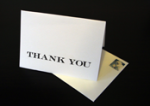 Strictly speaking, the purpose of technical writing is to provide technical information in a totally objective way. This type of technical writing is frequently written for professionals in a specific field who already “speak the language,” and understand the general concepts. So what may look like unintelligible “jargon” to the non-technical reader may well be a timesaving “insider language” for the technical reader in that specific field.
Strictly speaking, the purpose of technical writing is to provide technical information in a totally objective way. This type of technical writing is frequently written for professionals in a specific field who already “speak the language,” and understand the general concepts. So what may look like unintelligible “jargon” to the non-technical reader may well be a timesaving “insider language” for the technical reader in that specific field.
It is important to make the distinction between this type of technical writing, and a second type – the type of technical writing most of us will most often be called upon to write: technical writing that is, by most (short) definitions, good business writing dealing with technical information.
CLICK HERE TO CONTINUE READING






